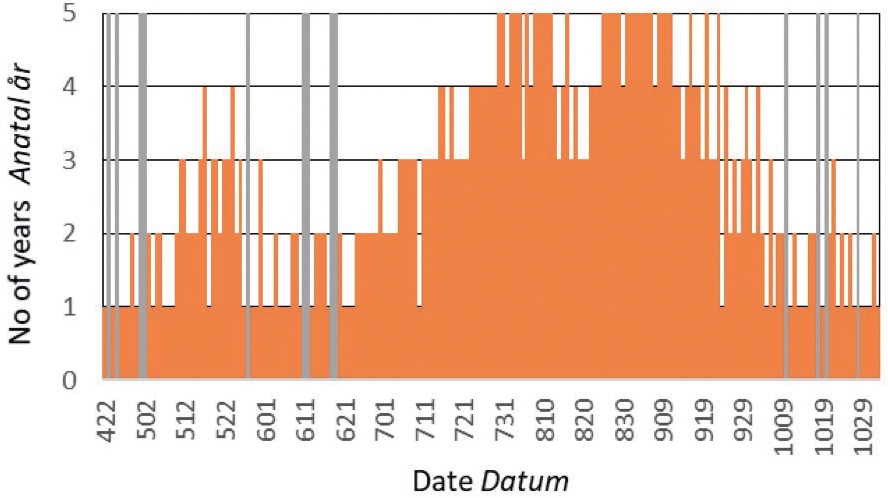Reningsverkets sedimenteringsdammar – ett förlorat fågelparadis: nostalgiskt återbesök och fallstudie
DOI:
https://doi.org/10.34080/os.v28.19535Abstract
Sewage ponds with exposed sludge are known to be excellent feeding sites for waders during migration. They still exist in parts of the world but are disappearing in pace with introduction of modern methods which do not involve open exposure of the sludge. Here I report a five-year study from a Swedish plant with open sludge ponds in the 1950s when many similar ones were still active. I counted the waders with frequent visits from 18 April through 2 November, 1952–1956. Ninety-three percent of the dates had a visit in at least one of the years giving an almost complete combined coverage of migration. Nineteen species were recorded at least once. The total average annual number of bird-days was 2868 (5% in spring). Most abundant were the Ruff Calidris pugnax with 35% and Wood Sandpiper Tringa glareola with 32% of all bird days. Temminck’s Stint Calidris temminckii showed the highest spring proportion of bird-days, 30%.
Nedladdningar

Downloads
Publicerad
Referera så här
Nummer
Sektion
Licens
Författaren/författarna innehar copyright för varje enskilt bidrag, men samtliga bidrag är publicerade under en Creative Commons-licens, så att vem som helst kan dela och återanvända bidraget förutsatt att copyright-innehavaren erkänns.







